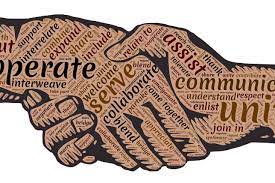By Aubaid Ahmad Akhoon
“Etiquette is the poetry of conduct; the rhythm that resonates within and harmonizes our interactions with the world.” These words carry a truth often overlooked in a world that prizes speed over subtlety and self-interest over social grace. Etiquettes are not simply a set of arbitrary rules devised by society; they are the living expression of one’s inner values, discipline, and respect for others. For people of depth and consciousness, manners are not rehearsed but instinctive—a lifetime legacy that shapes character and echoes far beyond individual lives. They are the silent architecture of human interaction, the unseen current that defines how we are remembered.
In daily life, etiquettes are the unseen yet binding threads. They begin with gestures so small they might escape notice: a courteous greeting, the offer of a seat, the softening of tone when listening to another’s troubles. These seemingly simple acts carry with them an invisible weight, for they acknowledge the dignity of others. When one pauses to say “please” or “thank you,” the act is not merely about words—it is a recognition of shared humanity. To open a door for someone is to open a moment of empathy. Conscious individuals understand this deeply; to them, these are not mechanical courtesies but natural outflows of a mindful heart.
Relationships, whether personal or professional, draw their nourishment from these very habits. At home, gratitude softens disputes, attentiveness nurtures trust, and kindness builds bonds that withstand the erosion of time. In professional life, where competition often threatens to eclipse cooperation, etiquettes stand as safeguards of civility. A workplace infused with punctuality, courtesy, and patience becomes more than an office; it transforms into a culture where respect breeds productivity. It is through these micro-behaviors that entire societies build cohesion, civility, and continuity.
At its essence, etiquette is a mirror of consciousness. It reflects not only how one perceives others but also how one perceives oneself in relation to the world. Conscious individuals act with the awareness that their gestures ripple outward, shaping impressions and sometimes destinies. Such people rarely need reminders to be kind; their empathy is instinctive, their respect unwavering. They carry within them a quiet sensitivity to cultural and social contexts, adapting to environments with grace. True refinement lies not in rigid uniformity but in the ability to honor diversity—an ability that belongs to those who live with genuine awareness.
This consciousness, however, is often tested by its opposite: aggression. Where etiquettes cultivate harmony, aggressive thinking disrupts it, exposing a weakness of mind rather than strength. History, philosophy, and faith alike tell us that aggression is the last refuge of those who lack wisdom or eloquence. Islam, in particular, emphasizes this truth. The Qur’an counsels the Prophet Muhammad (PBUH) to invite others to the path of God “with wisdom and good advice” and to engage in argument “in the most courteous way.” The divine directive elevates gentleness above hostility, dialogue above domination. Anger, harshness, and arrogance, while they may dominate a moment, never withstand the judgment of time. Selfishness, miserliness, and narrow-heartedness fade quickly, for dishonesty carries within itself the seeds of its own undoing.
In contrast, the quiet strength of etiquettes leaves a legacy that endures. A kind word remembered, a thoughtful gesture recalled, a lifetime of dignity honored—these are the memorials that outlast monuments of stone. The prayers and rituals offered after a person’s passing, though meaningful, risk slipping into mere formality if not grounded in genuine memory of their character. It is the etiquettes practiced while alive—the living rituals of respect, humility, and kindness—that define how someone is remembered. A polite smile or a gentle deed often outlives the loudest declarations, becoming part of the collective memory of family, community, and even history.
The contrast between living etiquettes and posthumous rituals is striking. While rituals after death bring comfort, they do not change how someone lived or how they are remembered. True legacy is carved in the everyday—through patience in adversity, generosity in scarcity, and respect in abundance. To live consciously with etiquettes is to write one’s epitaph in the hearts of others while still alive.
The timeless value of etiquettes lies in this enduring relevance. They are not external codes but internal compass points, guiding individuals toward a life of meaning. A person who lives with etiquettes embodies humility and consciousness, offering the world an example of how values transform into legacy. While death may claim the body, it cannot erase the influence of a life well-lived.

Poetry has long captured this truth with striking clarity. “Erase your being if you want some honor, that the grain blooms together in the dust.” These lines remind us that greatness requires surrender, just as the grain must dissolve into soil before it can sprout into life. Another couplet says, “Crying red is when a person stumbles; color comes after henna is thrown on rock.” Here, the lesson is of perseverance: true beauty, true strength, emerges only after trial.
So it is with etiquettes. They are cultivated not in ease but in struggle, honed not in isolation but in interaction. Each stumble, each test, each challenge deepens their roots until they bloom into something lasting. Just as the fragrance of henna is released only through pressure, so too the fragrance of character emerges through life’s difficulties. And it is this fragrance—the etiquette of a life lived with respect, empathy, and consciousness—that lingers, inspiring long after the person is gone.
The views expressed in this article are solely those of the author and do not necessarily reflect the opinions or views of this newspaper